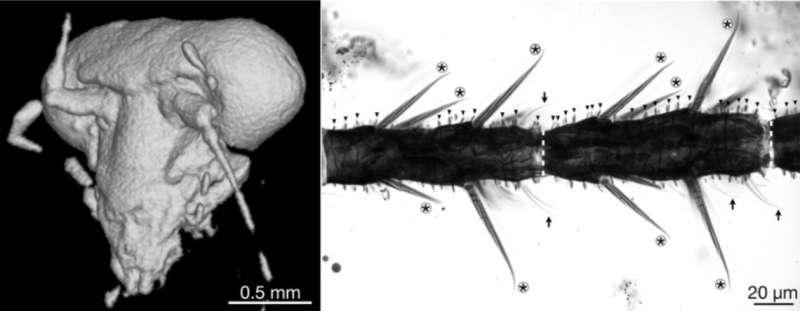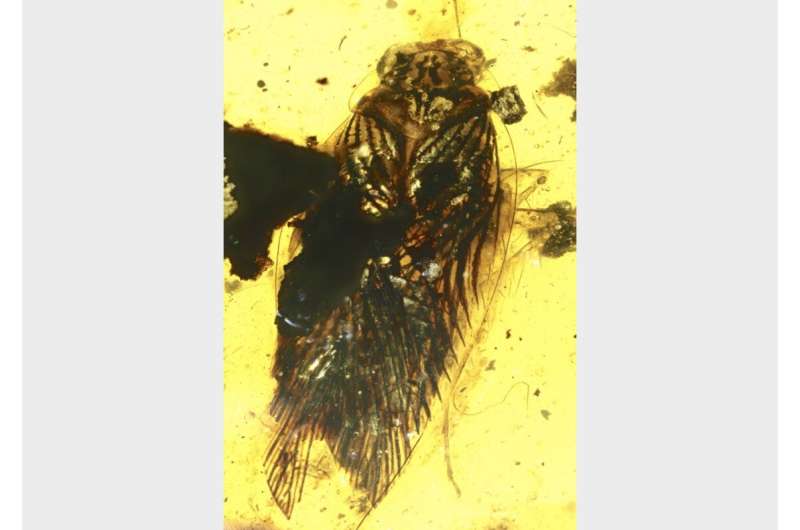Amber fossil reveals new clues about ancient cockroach ecology

Researchers at Hokkaido University have revealed new insights into an extinct cockroach species by studying the sensory organs of a specimen preserved in the fossilized tree resin known as amber. Their findings, which were published in the journal The Science of Nature, suggest that extinct cockroach species may have had more diverse habitats and behaviors than their related living species.
Animals are highly dependent on their sensory organs to detect information about their surroundings, such as sensing food, habitats, predators and mates. These organs are therefore crucial to their survival and evolution.
"Fossils provide the only direct line of evidence for tracing the diversity and evolution of sensory organs. However, insect organs are rarely preserved in sediments because they are so small and fragile," explains Ryo Taniguchi, researcher at Hokkaido University's Department of Natural History Sciences. "One way to solve this problem is to study exceptionally well-preserved fossil material from amber."
The Hokkaido team, in collaboration with colleagues at Fukuoka University, analyzed the sensory organs of an extinct male cockroach species called Huablattula hui. They studied a specimen preserved in a piece of amber from Myanmar estimated to be approximately 100 million years old.
They used a combination of techniques, including photography, microscopy, X-ray CT scans, 3D modeling and thin sectioning, to observe the cockroach in high resolution and compare its features to those of other species.

"The cockroach specimen was remarkably well preserved and showed many morphological features in fine detail," says Taniguchi.
The researchers found that, compared to dark-dwelling species alive today, H. hui had relatively large, well-developed eyes. H. hui also had fewer receptors on its antenna for detecting information such as odors, physical contact and temperature. Taken together, these observations imply that the species was active in bright and open environments during the daytime, in contrast to many existing cockroach species that live in dark habitats, such as forest floors, caves or night environments.
They also found that the species had a large number of sensory receptors on its antenna that resemble those used by male mantises to detect sex pheromones. The number and pattern of the receptors suggest that H. hui may have used them for communicating between sexes.
Overall, these observations indicate that cockroaches living during the Cretaceous period, from 145 to 66 million years ago, may have inhabited a wider range of environments compared to related species alive today.
This work shows that studying amber animal fossils is a powerful tool for understanding the evolution of sensory systems.
More information: Ryo Taniguchi et al, Reconstructing the ecology of a Cretaceous cockroach: destructive and high-resolution imaging of its micro sensory organs, The Science of Nature (2021). DOI: 10.1007/s00114-021-01755-9
Provided by Hokkaido University




















